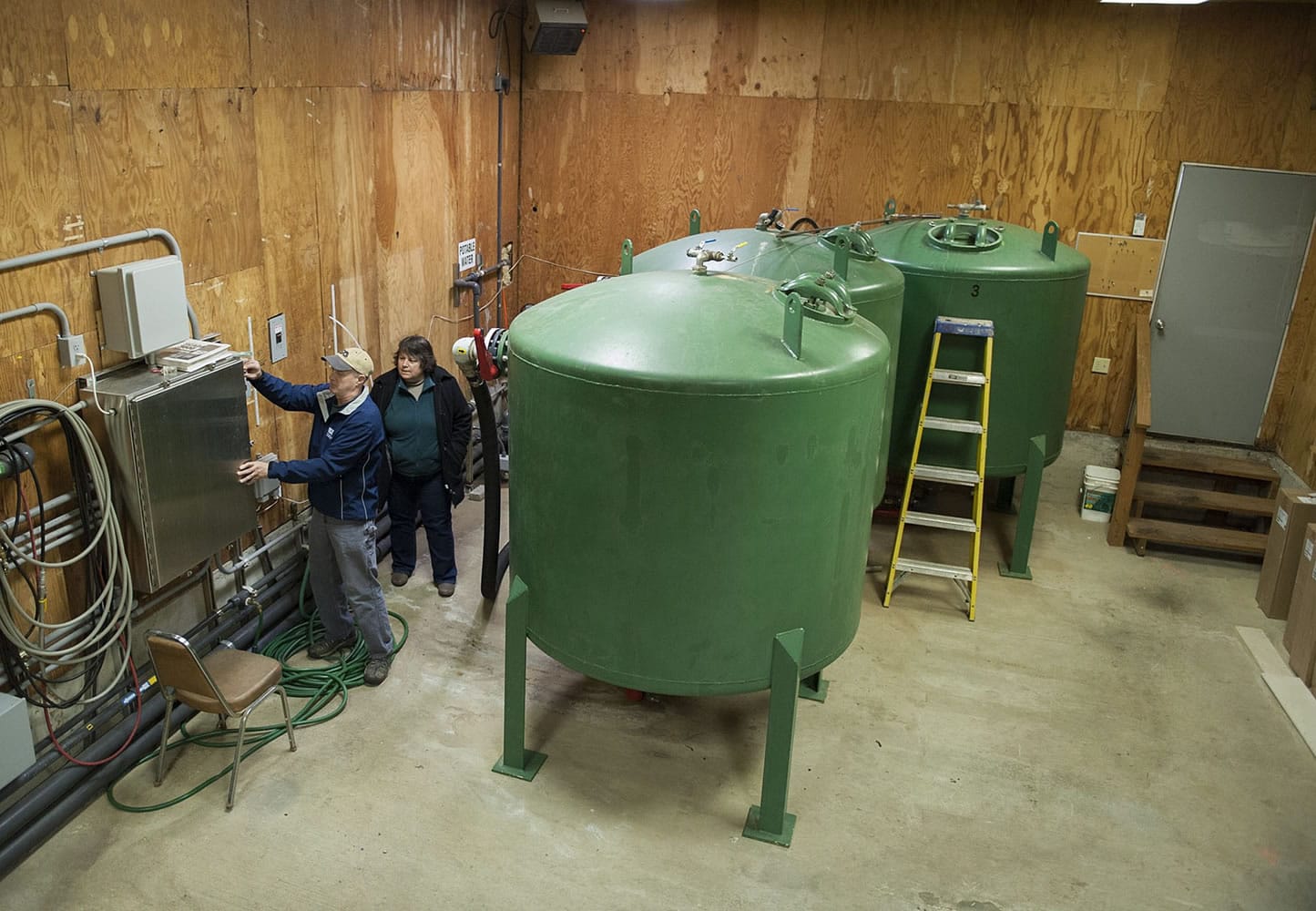It’s been 30 years since toxic levels of chromium were discovered in the groundwater underneath Hazel Dell, and officials now say an end to the cleanup is in sight.
The contaminated area, underneath the old Boomsnub Chrome & Grind and Airco Gases properties along Northeast 47th Avenue, was classified as a toxic Superfund site by the federal Environmental Protection Agency in the 1990s after it was discovered that Boomsnub spilled hexavalent chromium on the grounds and Airco had spilled volatile organic compounds.
The pollutants eventually got into the groundwater, about 50 to 90 feet below the surface. Only a layer of clay up to 30 feet thick separated the contaminants from the Troutdale Aquifer, the main drinking water source for Clark County. As a precaution, residents with wells along the contamination route had to stop using their wells and connect to municipal water.
Today, cleanup is ongoing but going well, according to EPA officials and engineers connected to the project. The area of contaminated ground has shrunk significantly, especially since an advanced treatment system was installed in 2002.
The EPA and EA Engineering, Science and Technology Inc., the company handling the cleanup, will start working together to close the site. Jonathan Williams, EPA project manager for the site, said the cleanup could be completed in about five years, with additional monitoring and other work possible after that.
“We’ve made great progress in reducing both the amount and the area that the contamination has covered,” said Judy Smith, the EPA’s community involvement coordinator for the site. “We’re actually to the point where the groundwater treatment system is pumping a lot of clean water to get at the contamination.”
The pump-and-treat system uses extraction wells to pump water out of the earth, remove the chromium and volatile organic compounds, and return the clean water to the ground. The chromium-contaminated area is much smaller than its previous size, and the area contaminated with volatile organic compounds has been reduced by half.
The most recent figures show the pump-and-treat system has cumulatively removed 22,264 pounds of chromium and 2,175 pounds of the volatile organic compound trichloroethene, according to the last official five-year review released in 2013.
To speed up the process, the EPA is considering a process that injects a substance called zero valiant iron into the aquifer. The material would bind to the soil, interact with the remaining volatile compounds and cause them to break up into non-harmful materials such as chloride and carbon dioxide.
A long process
Boomsnub and its predecessor, Pioneer Plating, ran a chrome-plating operation at 7608 Northeast 47th Ave. from 1967 until 1994. The state Department of Ecology first discovered chromium — the cancer-causing material made famous in the movie “Erin Brockovich” — in the groundwater near the company’s facilities in 1986. In 1990, Ecology forced Boomsnub to build a pump-and-treat system, which Ecology assumed control of a couple months later.
As the state investigated the chromium, it found volatile organic compounds in the water and eventually traced the pollution to Airco Gases, a company that had sat adjacent to Boomsnub since 1962. The company made and distributed gases for industrial and medical uses. Its parent company, BOC Gases, announced in late 1993 that it would take responsibility for any pollution from its property.
BOC was later bought by Linde Inc., which now oversees the cleanup. Linde still uses the property to produce compressed and liquefied gas products such as nitrogen, oxygen and argon.
In April 1995, the EPA added Boomsnub-Airco to the national priorities list as a Superfund site, expecting the cleanup to cost about $31 million. Superfund is the federal government’s primary program for cleaning the nation’s worst uncontrolled hazardous waste sites.
That same year, Boomsnub and two of its executives pleaded guilty to violating environmental laws in ways that led to the contamination. Charges against the company’s CEO, Jason Niblett, were dropped due his failing health. He died in 1996.
In 2000, the company agreed to contribute about $2 million to clean the $31 million Superfund site, but it defaulted and filed for bankruptcy in January 2001.
Doug Ballou was the president of the Northeast Hazel Dell Neighborhood Association when the cleanup began. He remembers the fear and frustration people had, but now things are different. He said Hazel Dell residents appear to be unaware, or at least unconcerned, with the cleanup.
“The pump-and-treat is pretty effective in containing it,” he said. “It’s an ongoing issue, but I think citizens are not as concerned about it at this point.”




